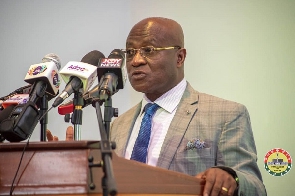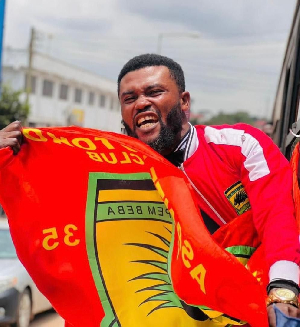Fresh revelations have emerged on how Boko Haram insurgents attacked Garkida town in Gombi Local Government Area of Adamawa State for six hours on Friday night. The town is located on the Gombi-Biu – Damaturu Road, which shares proximity with Southern Borno and Sambisa Forest.
Reports say police barracks, churches and a house belonging to Gen Paul Tarfa (retd.) were among several buildings burnt by the terrorists during the attack.
Meanwhile, the Islamic State’s West Africa Province is said to have claimed responsibility for the attack, alleging that they killed three soldiers and took some worshippers in a church hostage in addition to other villagers in the community.
Personnel of the Nigerian Army were said to have engaged the terrorists in a fierce gun battle. But a native of the town, Mr. Joshua Malgwi, told Sunday PUNCH that many persons were feared killed by the invaders who announced their entry into the town by shooting aimlessly.
There were also reports that the residents sighted the terrorists and warned the soldiers in the vicinity of the impending attack before they (insurgents) eventually overran the town and started shooting.
Meanwhile, a source in the town also told Sahara Reporters that the insurgents came in their numbers with several vans to ransack the town, looting pharmaceutical shops and homes for foodstuffs.
The source said, “They had unfettered access because a battalion of troops in the town was withdrawn sometime back, leaving behind just a few soldiers who could not repel the insurgents. After looting, they burnt down a police barracks, police station, two churches; Living Faith and EYN, and a shopping mall.
“People were also killed but I have no record as of now. They also razed General Paul Tarfa’s residence, among other important buildings in the town.”
A tweet by @tntmagazinenigeria also showed a church that was eventually burnt by the insurgents. It read, “Where several houses, which included those of prominent sons of Garkida, market, churches; EYN, Living Faith and Anglican burnt. Rural health centre, two ambulances burnt while another two taken by the insurgents.
“Two soldiers lost their lives, civilian casualties yet to be ascertained, the police station and barracks burnt. The attack left a devastating little town of Garkida. News from sources in the village says the insurgents came in about nine truckloads of their men and more than 50 motorcycles carrying at the least, two persons.
“The saddest part is that some people from the very town of Garkida who were recruited by the insurgents were the ones selectively showing the insurgents which properties to set ablaze. My heart bleeds for this nation we call Nigeria.”
Also, the Cavell Group, a consultant in intelligence, risk, crisis and expedition, in a series of tweets via @TCG_CrisisRisks, noted that many of the villagers were able to escape into the bush while some were abducted.
The report quoted Secretary General of Mali’s Ministry of Defense, Ibrahim Fane, as saying, “This cancer will spread far beyond here if we don’t fight together to end it.”
According to the report, the warnings of an impending global crisis come as the Pentagon weighs withdrawing from West Africa, where about 1,400 troops provide intelligence and drone support, among other forms of military help.
On Friday, the Chief of Army Staff, Lt. Gen Tukur Buratai, expressed belief that the insurgency would soon end.
Troop deployment based on B’Haram threats –Military sources
Meanwhile, top military sources have faulted the call by Governor Babagana Zulum of Borno State for the Federal Government to recruit 100,000 soldiers to face the insurgents. It said deployment of troops in the North-East was based on “a threat analysis of the insurgents and not on a bogus number.”
The sources told one of our correspondents on Friday that the deployment of troops were done in relation to the strength, weapons and capacity of the enemies.
One of the sources said, “The armed forces conduct recruitment based on policies and needs and not on a state governor’s comments. The authorities have, however, heard the governor and if there is any need for recruitment, the Presidency can order such and the armed forces will comply.
“Only the governor knows how he arrived at the figure.
“The military strength deployed to any location is not done haphazardly. There must be a thorough analysis to determine the number of personnel you need in a location for any operation and not just a bogus number. You also look at the strength of the adversaries and their weapon system.
“Then, you look at the deployments of the adversaries. These are the things that determine the strength of the troops you are going to deploy.”
The Director, Defence Information, Brigadier General Onyema Nwachukwu, could not be reached for comment on the matter.
Meanwhile, the Nigerian Air Force said it had neutralised some key leaders of the Islamic State of West Africa Province at Jubillaram and Alinwa in the northern part of Borno, as they assembled for meetings.
NAF Director of Public Relations and Information, Air Commodore Ibikunle Daramola, made the disclosure in a statement on Saturday in Abuja.
Daramola said the ISWAP leaders were neutralised in operations conducted on Thursday.
He said the airstrikes were carried out by the Air Task Force of Operation Lafiya Dole, under the auspices of Operation Rattle Snake III.
“The mission was executed on the heels of credible intelligence reports indicating that some key ISWAP leaders had assembled for meetings, which were being held simultaneously at two separate venues, at Jubillaram and Alinwa in Marte Local Government Area.
“Accordingly, the ATF scrambled its attack aircraft to engage both locations, damaging the meeting venues and neutralising the terrorists,’’ Daramola said.
He said NAF, operating in concert with surface forces, would sustain its air campaign to shape the battlespace in the North-East for the effective conduct of further ground and air operations.
Africa News of Sunday, 23 February 2020
Source: punchng.com

















